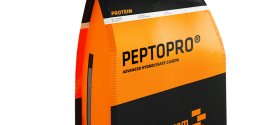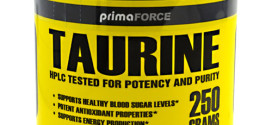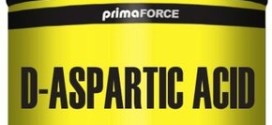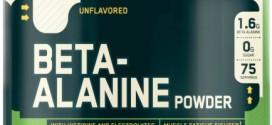Supplement Ingredient Guide: Acai Berry
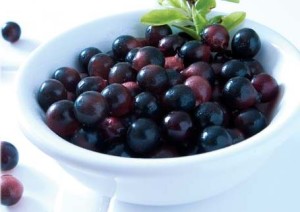
What is it?
Acai berry is a small dark purple fruit which is native to South America. It rose to prominence as a health supplement due to its high antioxidant effects.
Indications
It has a wide array of health benefits which include neuroprotection, anti-inflammatory, antioxidant, cholesterol regulation and atheroma plaque stabilisation. Despite popular marketing of acai berry as a weight loss supplement, evidence does not backup such indication.
How much should I take?
If you decide to use acai berry as a supplement, then we advise to follow the recommended instructions of use provided by the manufacturer. There is currently a shortage of evidence on the ideal dose of acai consumption within humans. Several papers have mentioned using 100g twice a day.
Research
Research has shown that acai berry is a potent antioxidant in humans; the highest recorded antioxidant capacity in any fruit or vegetable. Due to its antioxidant effect, it is capable of protecting against free radicals.
With regards to health benefits, there is a lot of evidence which confirms that acai berry has a neuroprotective role, suggesting it might hinder age-related neurodegeneration. It has also been shown to be a potent anti-inflammatory leading to a reduction in pain and improvement in movement disorders. It also plays a protective role against artherosclerosis. Finally, it has been shown within laboratory experiments that it can attenuate the proliferation of some cancer cells.
With regards to supplementing acai berry as a weight loss supplement then you’ll be surprised to hear that there is no credible evidence-based data to suggest it would work as a weight loss supplement. Despite being able to reduce the mean fasting glucose levels, mean plasma insulin levels, and lower total cholesterol levels it doesn’t have an impact on weight.
Side effects
In a recent 2010 study it was deemed to be a sae and well tolerated supplement with no reported side-effects. However, more research is still needed to confirm this.
References
de Oliveira PR, da Costa CA, de Bem GF, de Cavalho LC, de Souza MA, de Lemos Neto M, da Cunha Sousa PJ, de Moura RS, Resende AC. (2010) Effects of an extract obtained from fruits of Euterpe oleracea Mart. in the components of metabolic syndrome induced in C57BL/6J mice fed a high-fat diet. J Cardiovasc Pharmacol. 2010 Dec;56(6):619-26.
de Souza MO, Silva M, Silva ME, Oliveira Rde P, Pedrosa ML. (2010) Diet supplementation with acai (Euterpe oleracea Mart.) pulp improves biomarkers of oxidative stress and the serum lipid profile in rats. Nutrition. 2010 Jul-Aug;26(7-8):804-10. Epub 2009 Dec 22.
Feio CA, Izar MC, Ihara SS, Kasmas SH, Martins CM, Feio MN, Maués LA, Borges NC, Moreno RA, Póvoa RM, Fonseca FA. (2011) Euterpe Oleracea (Açai) Modifies Sterol Metabolism and Attenuates Experimentally-Induced Atherosclerosis. J Atheroscler Thromb. 2011 Dec 3. [Epub ahead of print]
Guerra JF, Magalhães CL, Costa DC, Silva ME, Pedrosa ML. (2011) Dietary açai modulates ROS production by neutrophils and gene expression of liver antioxidant enzymes in rats. J Clin Biochem Nutr. 2011 Nov;49(3):188-94. Epub 2011 Jun 17.
Holderness J, Schepetkin IA, Freedman B, Kirpotina LN, Quinn MT, Hedges JF, Jutila MA. (2011) Polysaccharides isolated from Açaí fruit induce innate immune responses. PLoS One. 2011 Feb 28;6(2):e17301.
Jensen, G. S., Ager, D. M., Redman, K. A., Mitzner, M. A., Benson, K. F., and Schauss, A. G. (2011).Pain Reduction and Improvement in Range of Motion After Daily Consumption of an Açai (Euterpe oleracea Mart.) Pulp–Fortified Polyphenolic-Rich Fruit and Berry Juice Blend. J Med Food. July; 14(7-8): 702–711.
Jensen GS, Wu X, Patterson KM, Barnes J, Carter SG, Scherwitz L, Beaman R, Endres JR, Schauss AG. (2008)In vitro and in vivo antioxidant and anti-inflammatory capacities of an antioxidant-rich fruit and berry juice blend. Results of a pilot and randomized, double-blind, placebo-controlled, crossover study. J Agric Food Chem. 56:8326–8333.
Honzel D. Carter SG. Redman KA, et al. (2008) Comparison of chemical and cell-based antioxidant methods for evaluation of foods and natural products: generating multifaceted data by parallel testing using erythrocytes and polymorphonuclear cells. J Agric Food Chem. 56:8319–8325.
Kang J. Li Z. Wu T, et al. (2010) Antioxidant capacities and anti-inflammatory effects of flavonoid compounds from açai pulp (Euterpe oleracea Mart.) Food Chem.122:610–617.
Moura RS, Ferreira TS, Lopes AA, Pires KM, Nesi RT, Resende AC, Souza PJ, Silva AJ, Borges RM, Porto LC, Valenca SS. (2012) Effects of Euterpe oleracea Mart. (AÇAÍ) extract in acute lung inflammation induced by cigarette smoke in the mouse. Phytomedicine. 2012 Feb 15;19(3-4):262-9. Epub 2011 Dec 3.
Noratto GD, Angel-Morales G, Talcott ST, Mertens-Talcott SU. (2011) Polyphenolics from açaí ( Euterpe oleracea Mart.) and red muscadine grape (Vitis rotundifolia ) protect human umbilical vascular Endothelial cells (HUVEC) from glucose- and lipopolysaccharide (LPS)-induced inflammation and target microRNA-126. J Agric Food Chem. 2011 Jul 27;59(14):7999-8012. Epub 2011 Jun 30.
Del Pozo-Insfran D, Percival SS, Talcott ST. (2006). Acai (Euterpe oleracea Mart.) polyphenolics in their glycoside and aglycone forms induce apoptosis of HL-60 leukemia cells. J Agric Food Chem.54:1222–9.
Poulose SM, Fisher DR, Larson J, Bielinski DF, Rimando AM, Carey AN, Schauss AG, Shukitt-Hale B. (2012) Anthocyanin-rich açai (Euterpe oleracea Mart.) fruit pulp fractions attenuate inflammatory stress signaling in mouse brain BV-2 microglial cells. J Agric Food Chem. 2012 Feb 1;60(4):1084-93. Epub 2012 Jan 20.
Ribeiro JC, Antunes LM, Aissa AF, Darin JD, De Rosso VV, Mercadante AZ, Bianchi Mde L. (2009) Evaluation of the genotoxic and antigenotoxic effects after acute and subacute treatments with açai pulp (Euterpe oleracea Mart.) on mice using the erythrocytes micronucleus test and the comet assay. Mutat Res. 2010 Jan;695(1-2):22-8. Epub 2009 Nov 3.
Schauss AG, Clewell A, Balogh L, Szakonyi IP, Financsek I, Horváth J, Thuroczy J, Béres E, Vértesi A, Hirka G. (2010) Safety evaluation of an açai-fortified fruit and berry functional juice beverage (MonaVie Active(®)).Toxicology. 2010 Nov 28;278(1):46-54. Epub 2010 May 7.
Spada PD, Dani C, Bortolini GV, Funchal C, Henriques JA, Salvador M. (2009) Frozen fruit pulp of Euterpe oleraceae Mart. (Acai) prevents hydrogen peroxide-induced damage in the cerebral cortex, cerebellum, and hippocampus of rats. J Med Food. 2009 Oct;12(5):1084-8.
Stoner GD. Foodstuffs for preventing cancer: the preclinical and clinical development of berries. Cancer Prev Res (Phila Pa) 2009;2:187–94.
Udani, J. K, Singh, B. B., Singh, V. J. and Barrett, M. L. (2011). Effects of Açai (Euterpe oleracea Mart.) berry preparation on metabolic parameters in a healthy overweight population: A pilot study. Nutr J. 2011; 10: 45.
Xie C, Kang J, Burris R, Ferguson ME, Schauss AG, Nagarajan S, Wu X. (2011) Açaí juice attenuates atherosclerosis in ApoE deficient mice through antioxidant and anti-inflammatory activities. Atherosclerosis. 2011 Jun;216(2):327-33. Epub 2011 Feb 24.
 Supplement Judge Unbiased Supplement Reviews – Do they really work??
Supplement Judge Unbiased Supplement Reviews – Do they really work??

